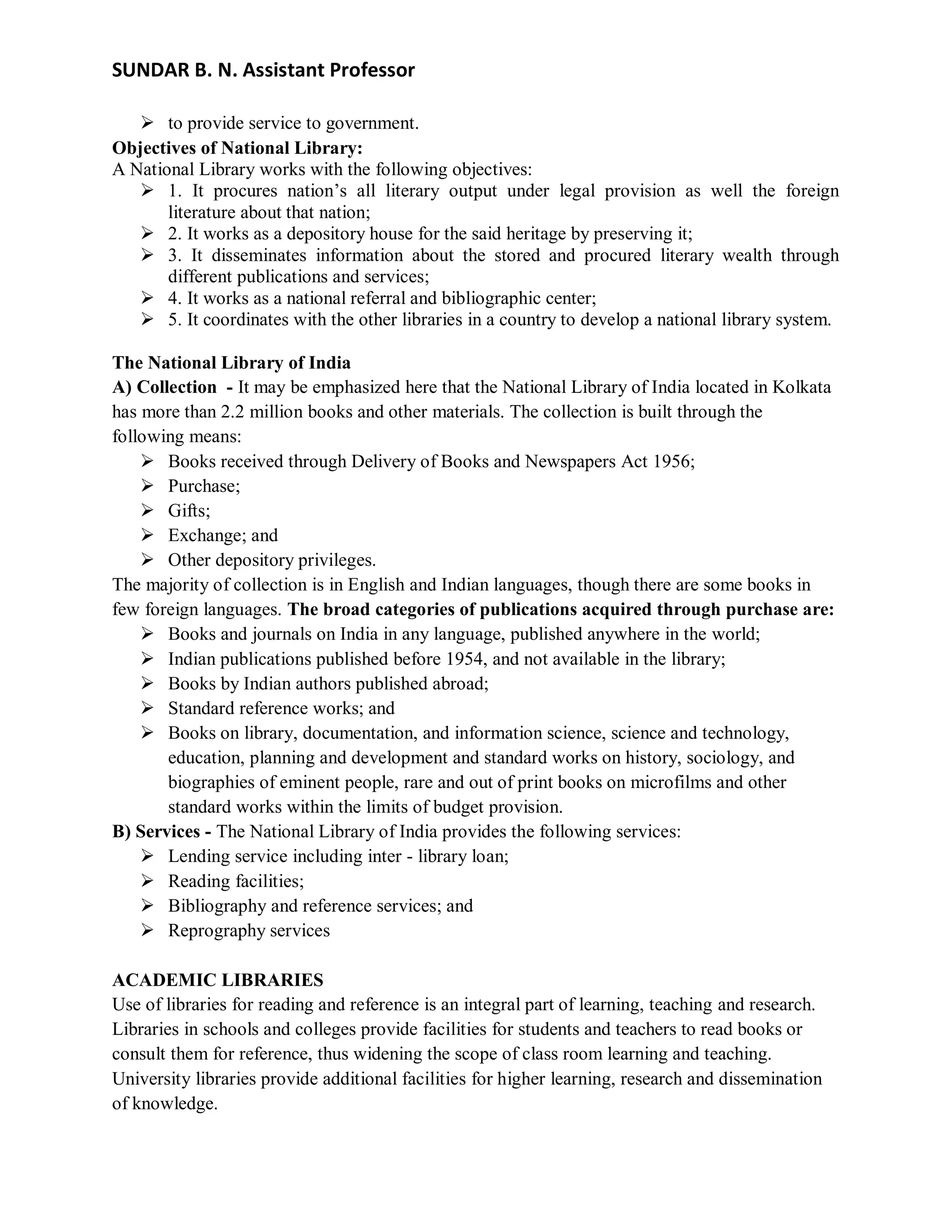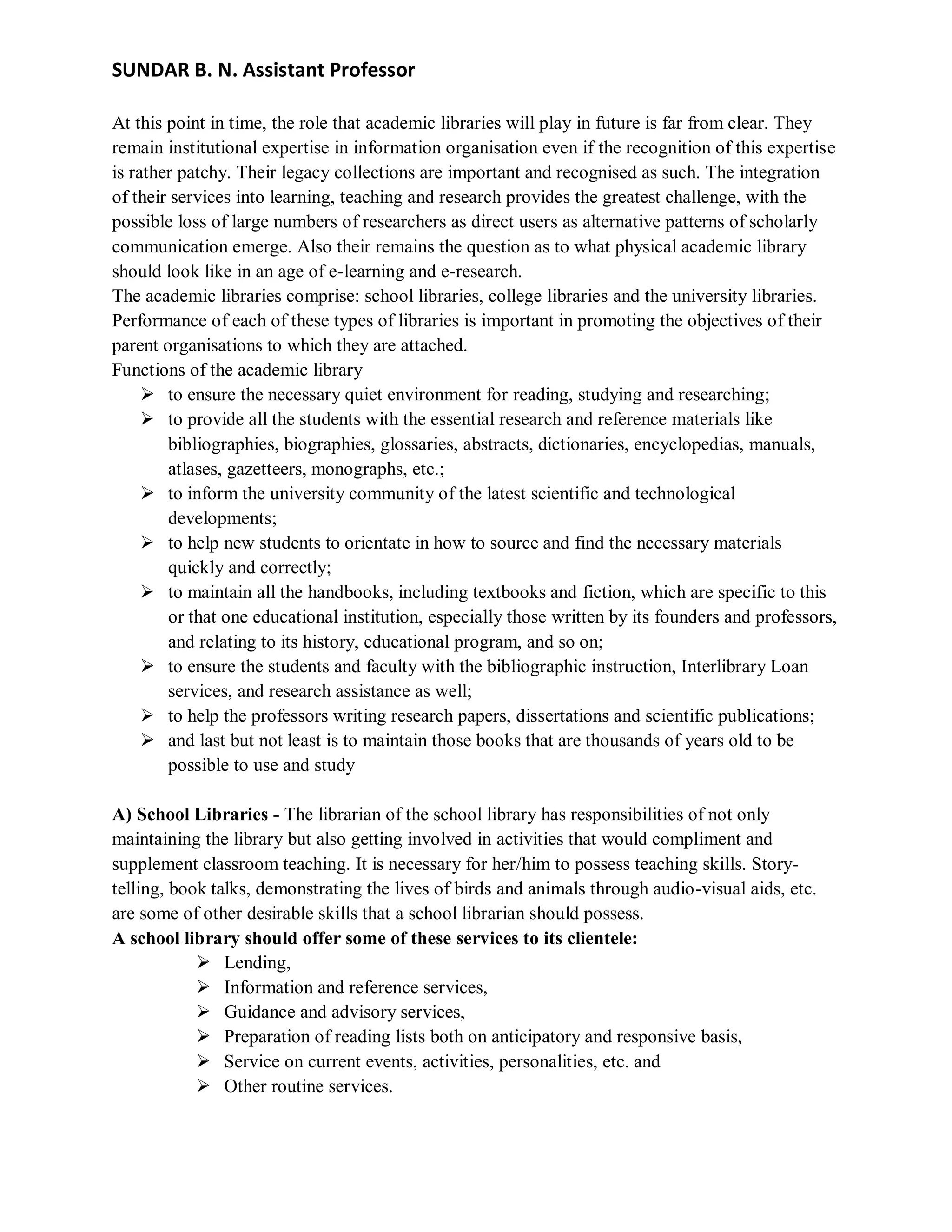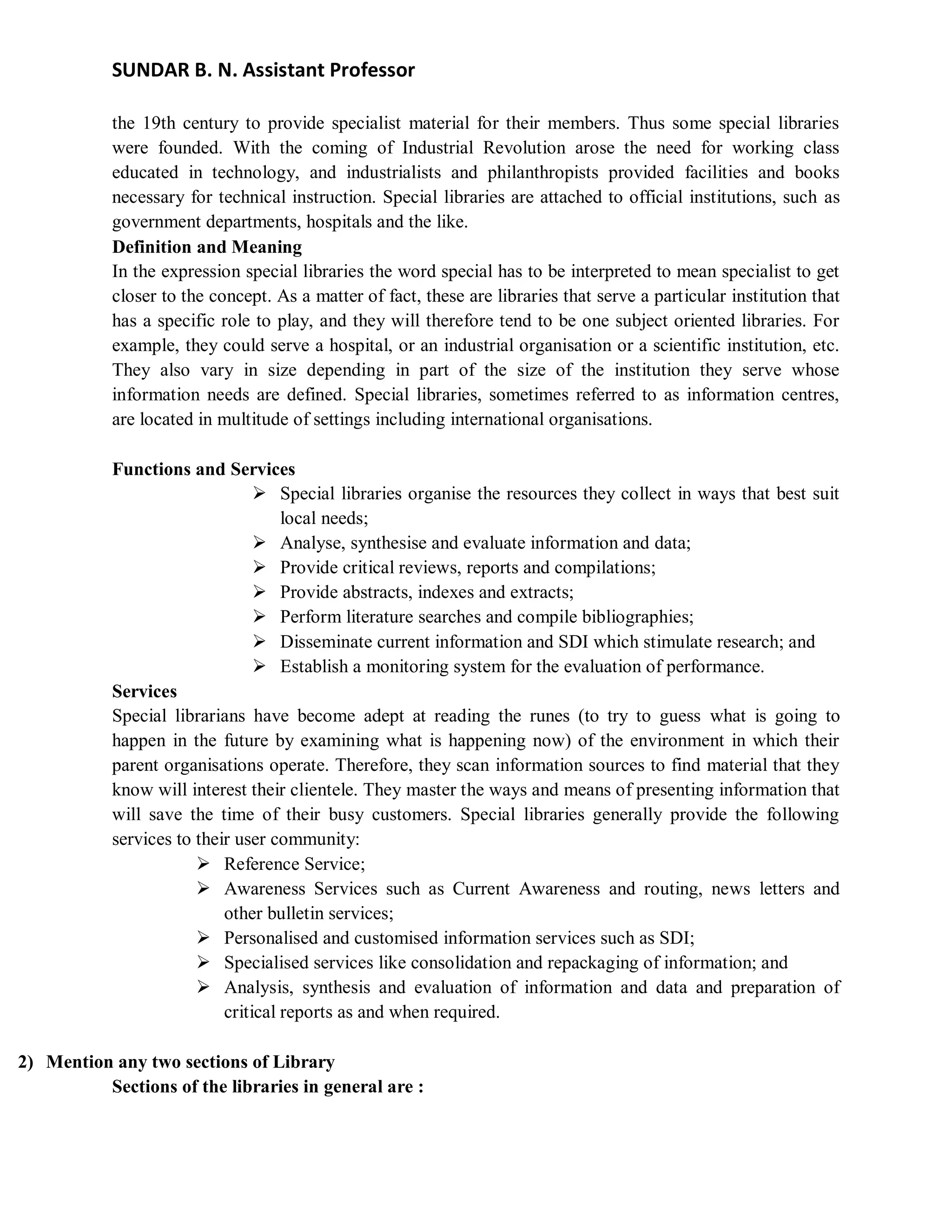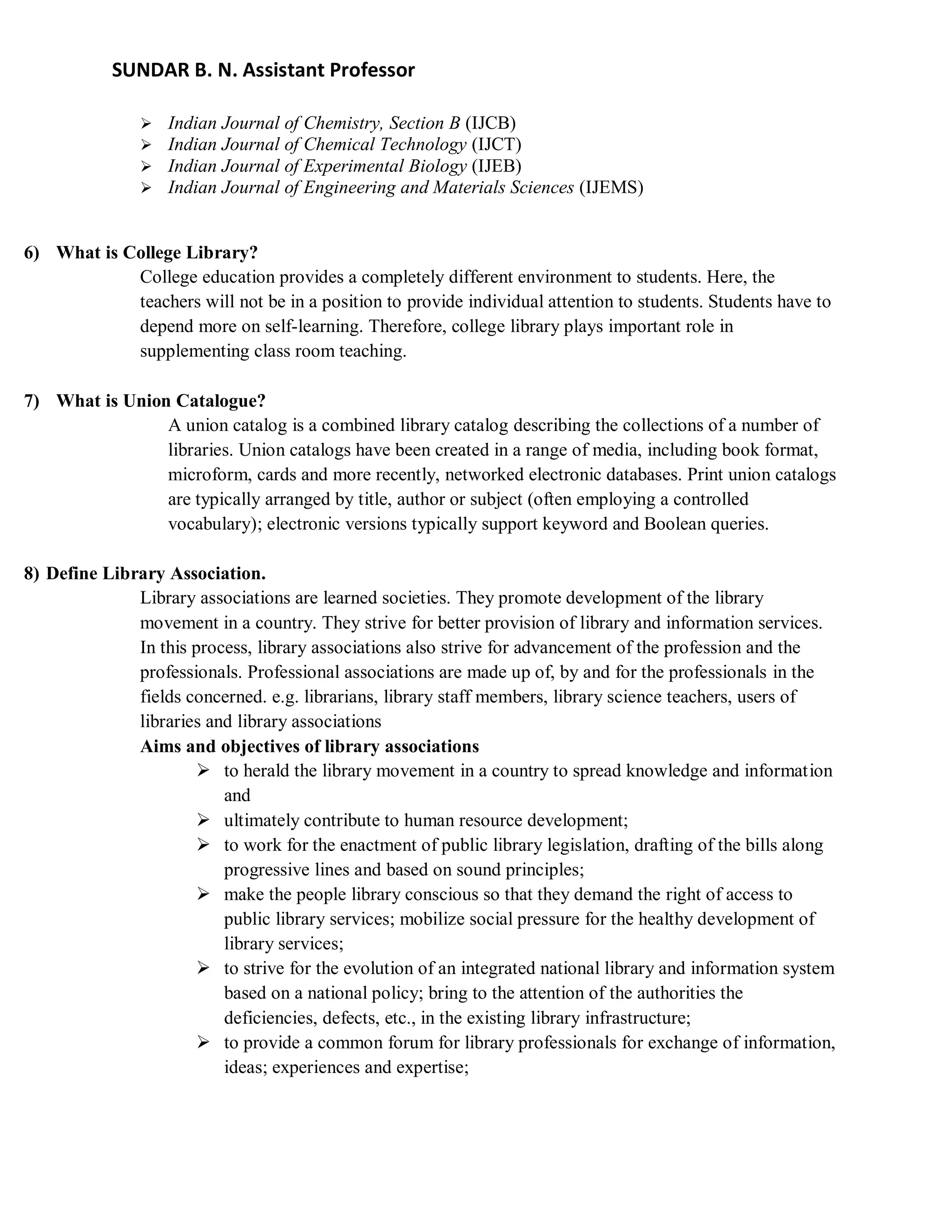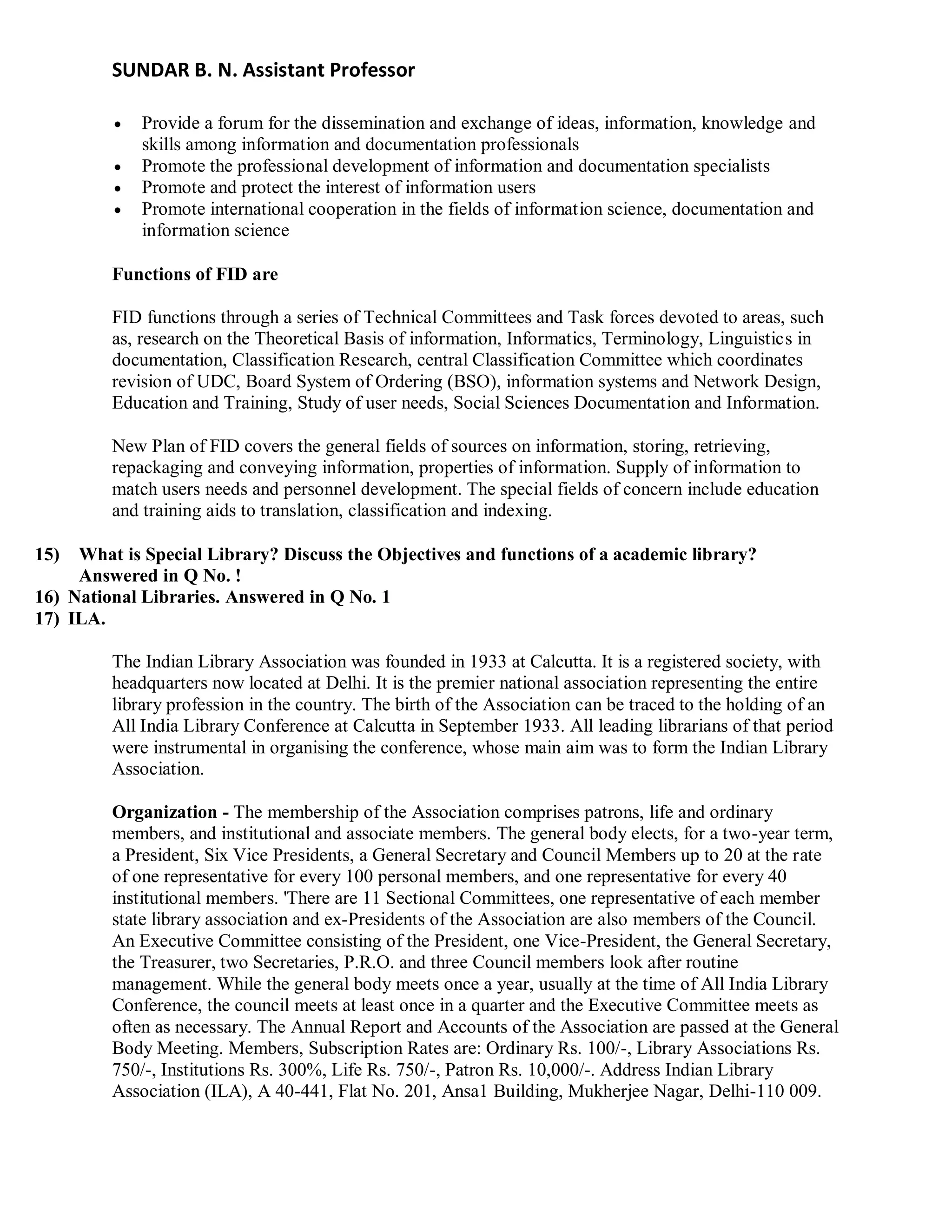The document provides an overview of libraries, focusing on national, academic, public, and special libraries, along with their definitions, functions, and objectives. National libraries serve as repositories of a nation's literary output, while academic libraries support education and research at schools, colleges, and universities. Public libraries promote literacy and serve as community knowledge centers, and special libraries cater to specific institutions with specialized collections and services.

